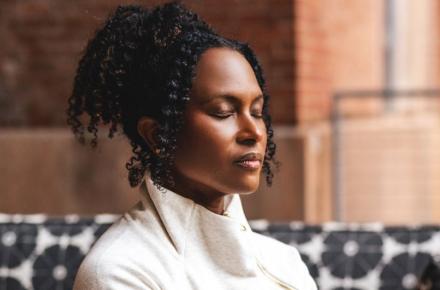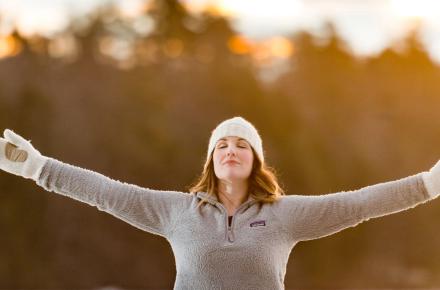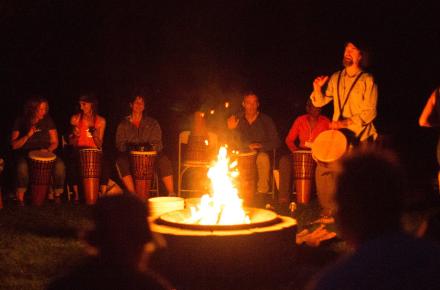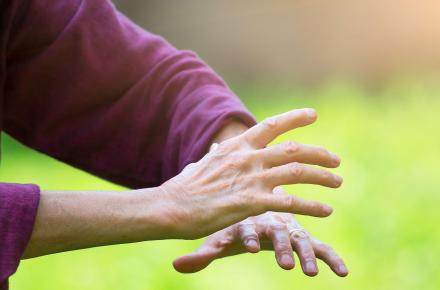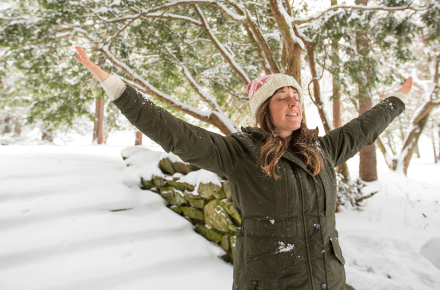Any Body Is a Yoga Body

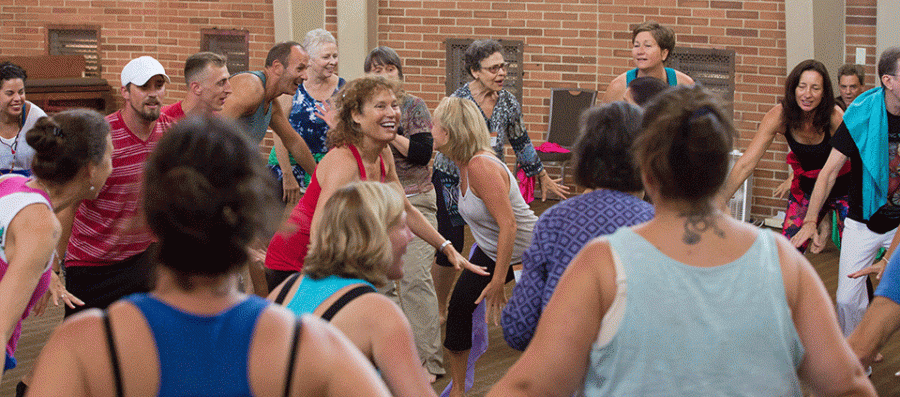
Before I began practicing yoga regularly, I thought I didn’t belong in a class—because of how I perceived people who do yoga.
"There’s a certain kind of body that many believe is the ‘yoga look,’” says Megha Nancy Buttenheim, founding director of Let Your Yoga Dance® LLC. “The 'perfect' bodies you see [in the media] are typically under 30 and have absolutely no adipose tissue and not one wrinkle on their faces. This trend saddens me because yoga means ‘union.’ It doesn’t mean ‘perfect, young, svelte, teenage, lean-and-mean body.’”
Ubiquitous yoga ads replete with slim and youthful bodies are not the only reason the practice can be intimidating. “Early in the days of people practicing yoga in the west, the ads and PR mostly showed students in advanced poses,” says Kripalu Schools faculty member Sudha Carolyn Lundeen. “It was an attempt to be inspiring. And it was—for some. Others just said, ‘I pass—I could never do any of that.’”
But Sudha and Megha know differently. “There are far more people who are not bendy, strong, heroic types—at least at first—who are practicing and benefiting from yoga,” says Sudha. “When you start with what your body-mind is ready for and proceed from there, yoga is available to everyone—no matter their shape, size, or flexibility.”
“No one is too old, large, weak, inflexible, imbalanced, or sick to practice yoga,” Megha agrees, adding that Kripalu Yoga is the yoga of compassion, not the yoga of perfection.
For a decade now, Megha has been teaching Let Your Yoga Dance—which combines postures, the breath, and user-friendly dance moves—to the elderly, people with Parkinson’s, multiple sclerosis, arthritis, diabetes, cancer, and more. She’s seen firsthand how beneficial the practice can be for even the most physically compromised. “A lot of folks mistakenly think they need to lose 30 pounds, become younger, or be able to touch their toes before they take their first class,” says Megha. “That’s inaccurate thinking. I tell my students, ‘Let Your Yoga Dance is a come-as-you-are party!’ I honor all bodies. If your yoga studio does not honor you just as you are, find another studio.”
Sudha brings yoga to special populations, as well—including pregnant women and people suffering from injuries, chronic pain, or back problems. Sudha says yoga is so flexible (pun not intended!) that it can be tailored to any number of physical or mental/emotional challenges, as well as different body types, such that the benefits can still be reaped
“I have many students who have very curvy and full bodies,” she notes, adding that it’s possible to modify postures to accommodate larger bellies and/or fuller breasts. “Child's pose will likely need to be done with the knees wide apart,” she explains. “In Seated Forward Fold, you can widen your legs to make room, or you might simply shift your expectations around bending as deeply forward as someone who has a smaller belly or breasts.”
Accustomed to working with people in wheelchairs, Megha leads her students in seated Sun and Moon Salutations. To encourage her students with Parkinson’s to use their face and throat muscles, she leads an “ice cream dance” in which students pretend to eat their favorite ice cream cone. “As time goes on, some folks with Parkinson’s have a tough time swallowing,” she explains. “Their speaking can get very quiet, sometimes inaudible. So I get them singing, toning, sounding, and om-ing. It’s fascinating to see how much better their voices become when they use them.”
To work the upper body, Megha incorporates straps. “I ask the group to hold onto the strap with their arms overhead. This is a good way to coordinate breath with movement. I invite the students to inhale their arms up with the strap, then stretch to the right laterally and left laterally, and then twist in their chairs.”
If students are able to move their legs and feet somewhat, it’s still possible to gain lower-body benefits from doing yoga in a chair, Megha says. “You can easily do some flexion with the feet as you sit, and you can get synovial fluid moving in the ankle joint by circling the feet,” she explains. “You can work the calf muscles by putting your feet flat on the ground and lifting your heels up and down, and the same with your toes. If you pick up both feet at the same time, moving in a chair can actually give you a great abdominal workout.”
“The practice of yoga may have different focuses and approaches,” Sudha says, reflecting on her students with special needs, “but what I see across the board is the cultivation of greater self-acceptance, patience, compassion, and confidence.”
Equally important, Megha observes, is how the practice breaks the sense of isolation that people with progressive diseases and special needs often experience—increasing what she calls “the joy quotient.”
“When you let your yoga dance, you bring endorphins to the brain and joy to the spirit,” she says. “In most yoga classes, you find yourself staring at someone’s back in front of you. In Let Your Yoga Dance, we’re looking into one another’s eyes. Suddenly, people’s issues become secondary. Their hearts and souls become primary. We become a community.”
© Kripalu Center for Yoga & Health. All rights reserved. To request permission to reprint, please e-mail editor@kripalu.org.






















